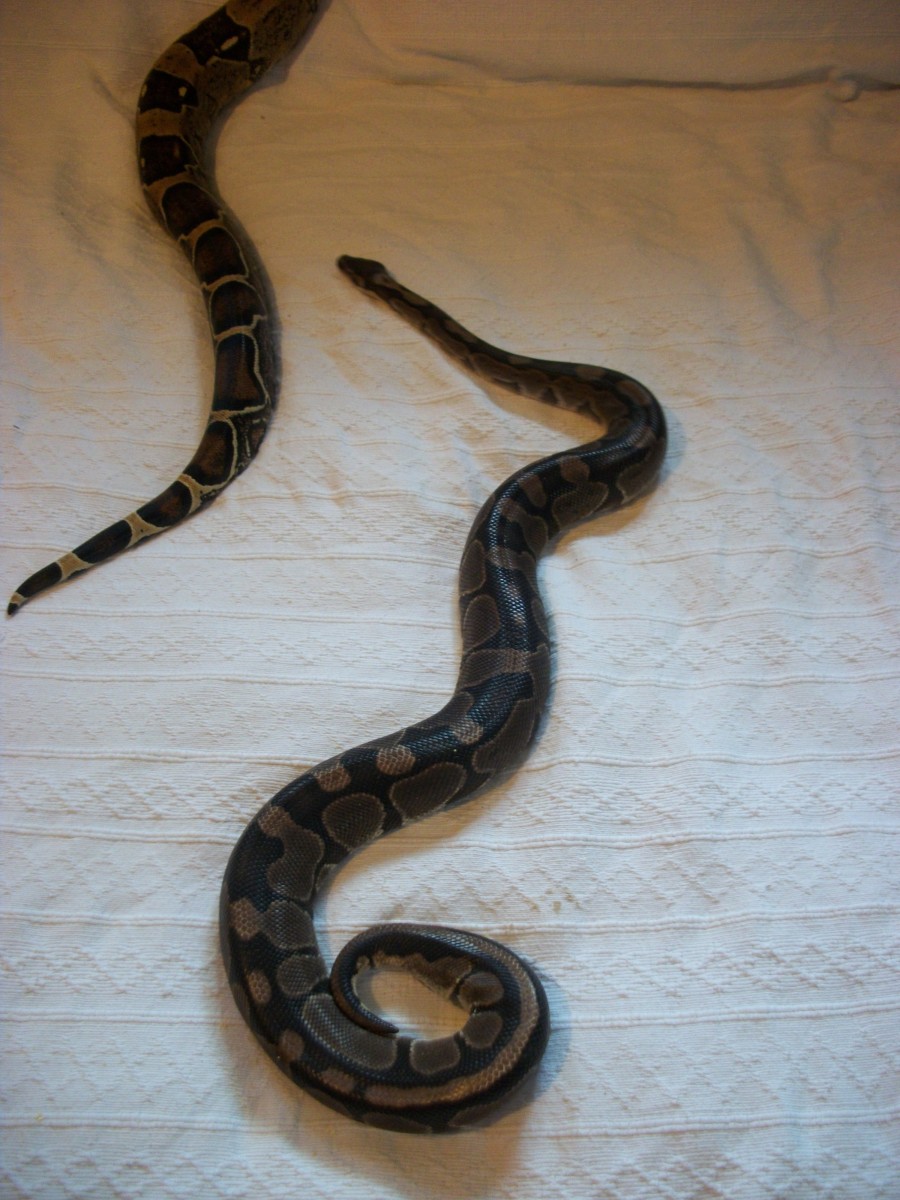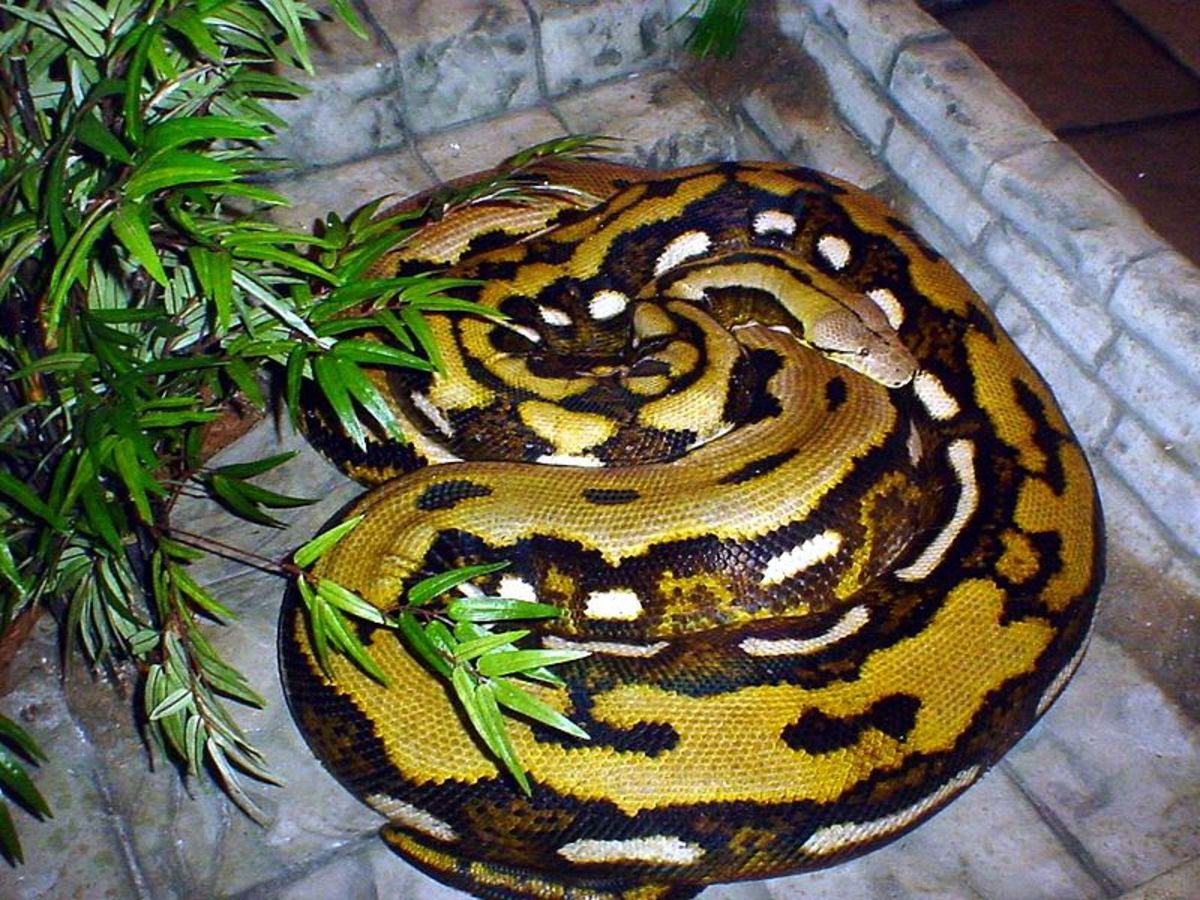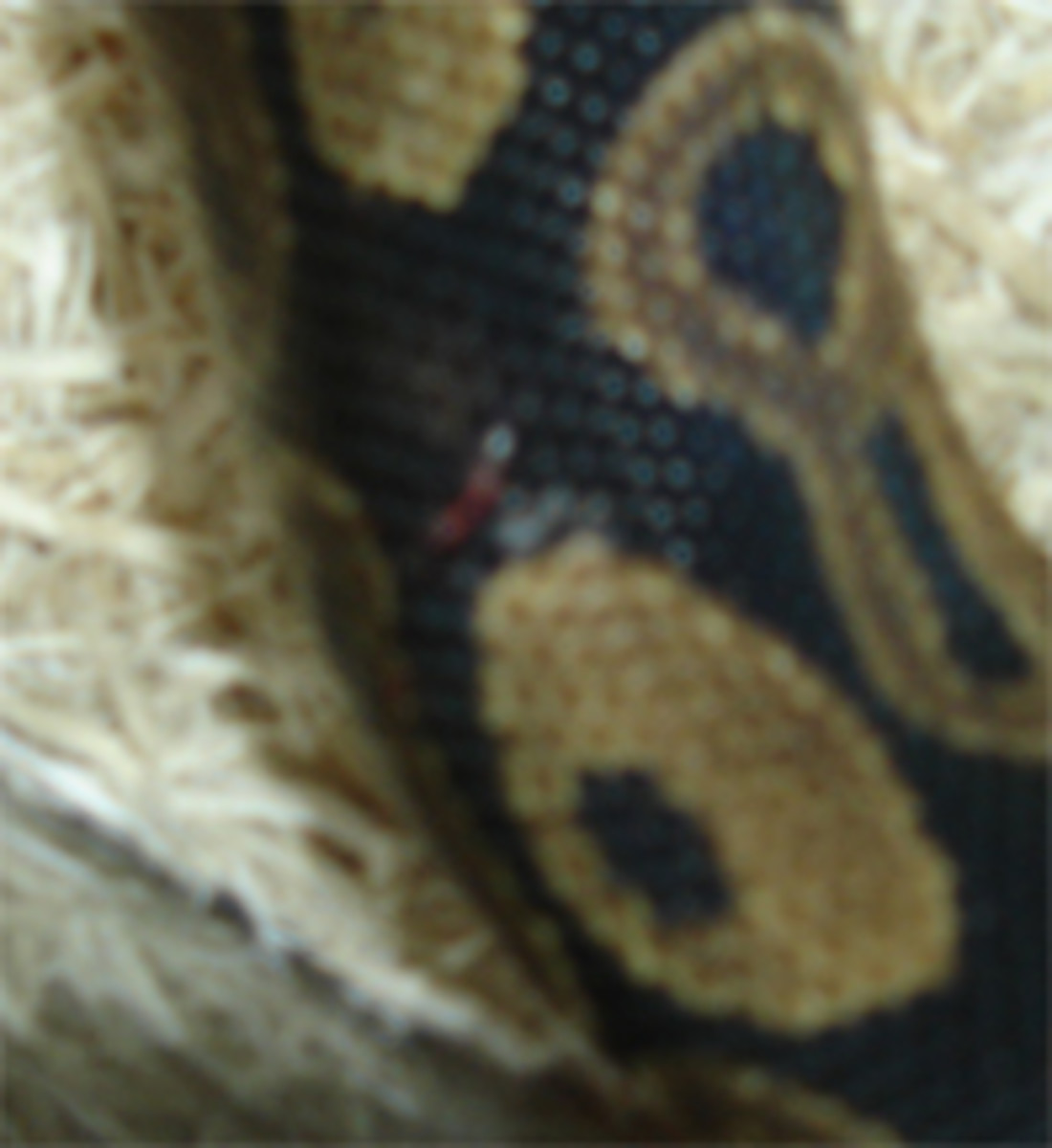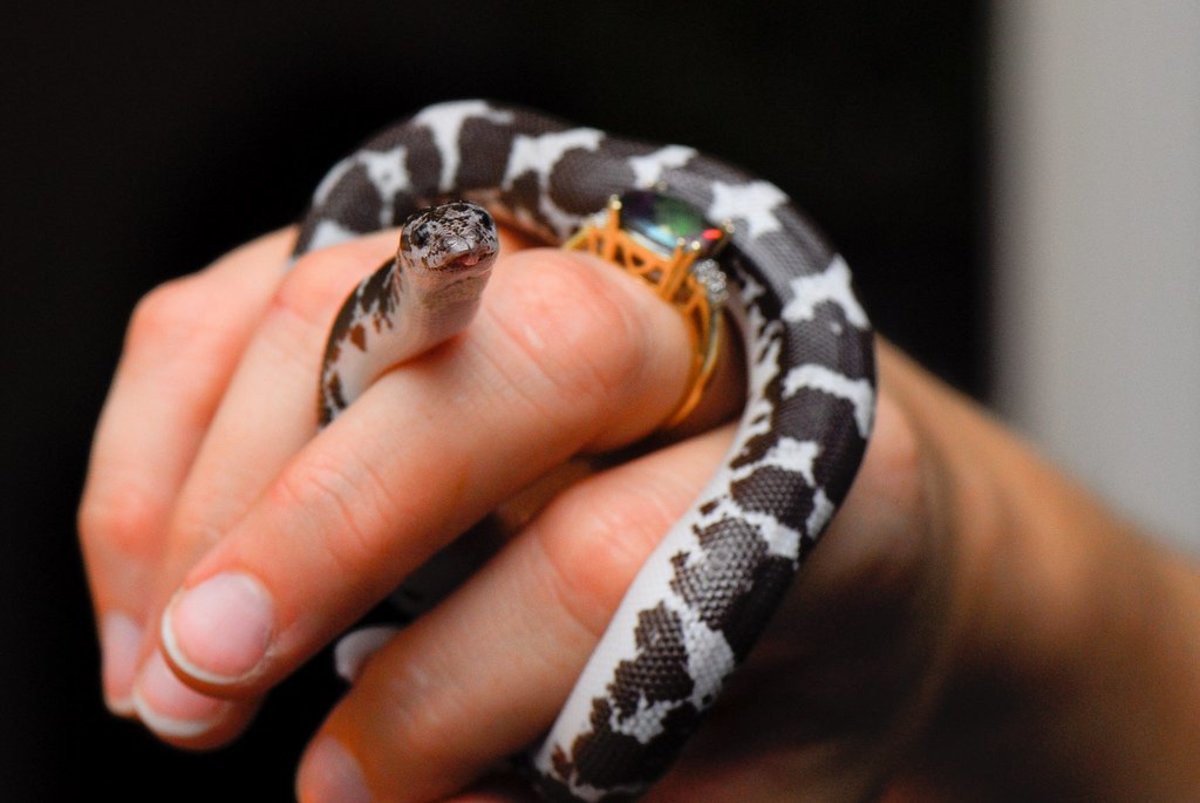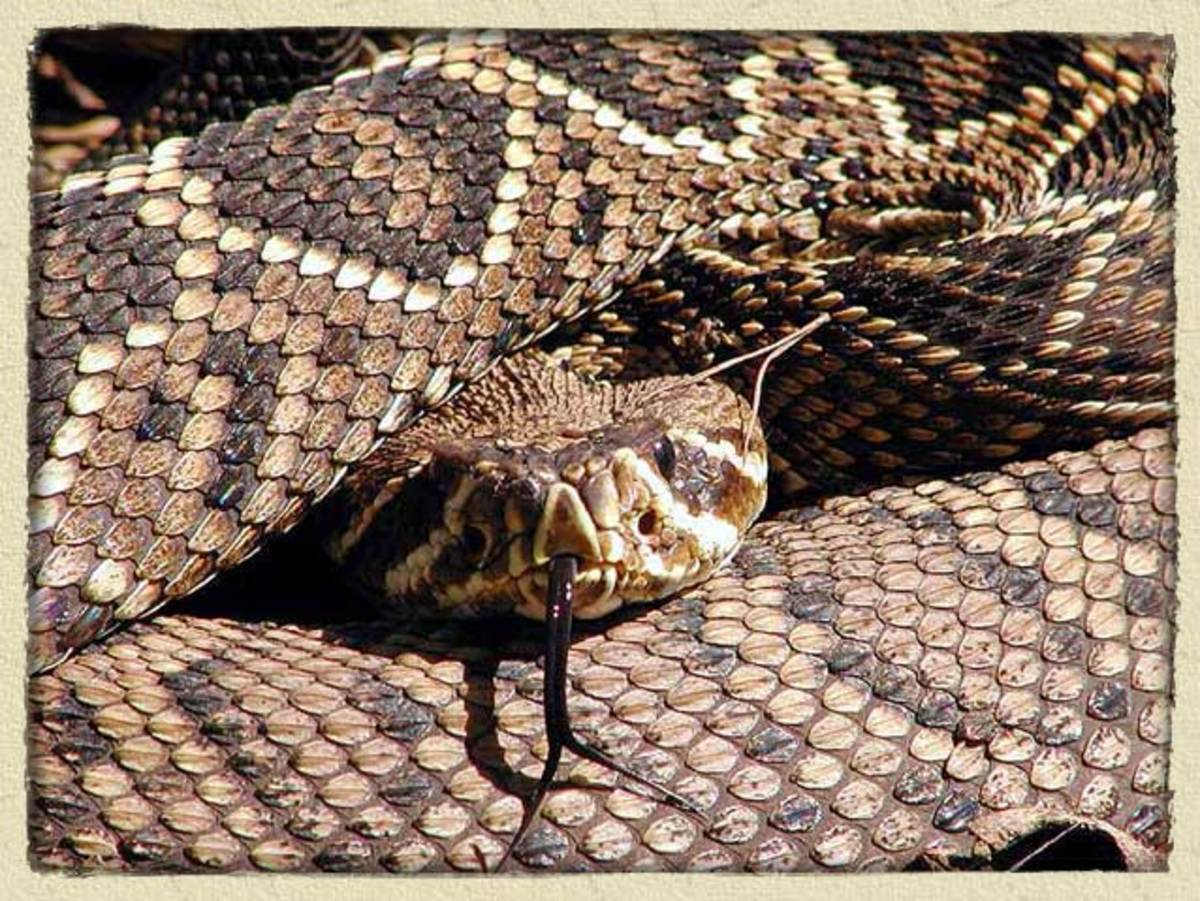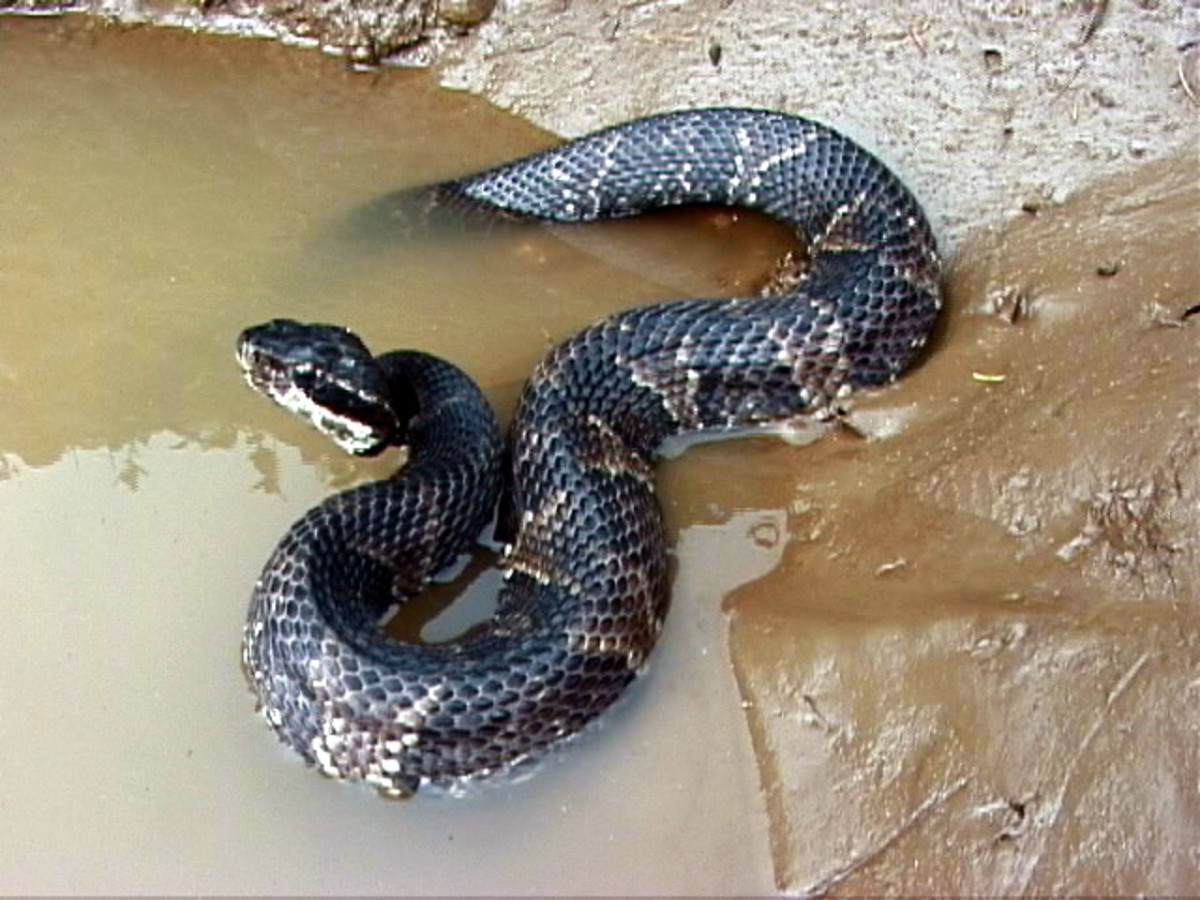How to Tell If Your Ball Python Snake has Thermal Burns
Thermal burns occur when a ball python comes into contact with a surface that is too hot or when it rests for a long period of time on a very warm surface. Thermal burns can be caused by heat lamps, hot rocks that are too hot, or undertank heaters that do not have a thermostat or rheostat attached to them.
Hot rocks are not appropriate heating elements for ball pythons. If the ambient air temperature in the enclosure is too low, the snake will never feel warm; it will wrap itself around the hot rock in an attempt to warm itself. The cool air in the enclosure will keep the snake on the hot rock as it tries to warm itself, and the cycle will keep repeating itself until the snake eventually becomes burned.
When using undertank heating pads, it is important to use a rheostat or thermostat. This allows you to adjust the amount of heat that the mat is emitting. If you use heat lamps or heat emitters to warm the cage, they must be installed in such a way as to prevent the snake from having direct contact with them.
Initially, a burn often appears as a reddened area on the belly; this is the area that usually becomes burned. Do not mistake a burn for a shed cycle. Many times, in the early stages of a shed cycle, the python's belly will take on a pinkish hue that a hobbyist could confuse with a burn. As time progresses, the burned area may begin to turn brown in color and ooze, and the scales may begin to peel away. All but the most minor thermal burns require veterinarian care.
If your snake gets burned, change the substrate in the cage to some material that will not stick to the healing wound. Generally, paper towels or newspaper work well as a temporary substrate while your ball python heals. Your ball python will go through numerous sheds at 1 this time as it heals the burned area. Your snake may also refuse to eat during this time. Provide the snake with plenty of fresh water, and keep an eye on it to make sure that it does not dehydrate during its recovery. Follow your veterinarian's instructions carefully while your snake is healing. Thermal burns are most easily prevented through the use of proper heating equipment.
- A Guide to Ball Python Breeding
Breeding your ball python opens up an entire new world of experiences and challenges from a successful breeding to the excitement of your first clutch of eggs and then on to seeing the noses of hatchlings... - How to Choose the Right Cage for Your Ball Python
Breeders and hobbyists with large ball python collections favor rack systems for housing their snakes. They are the most space-efficient option. When determining what type of cage you would like to use,...


